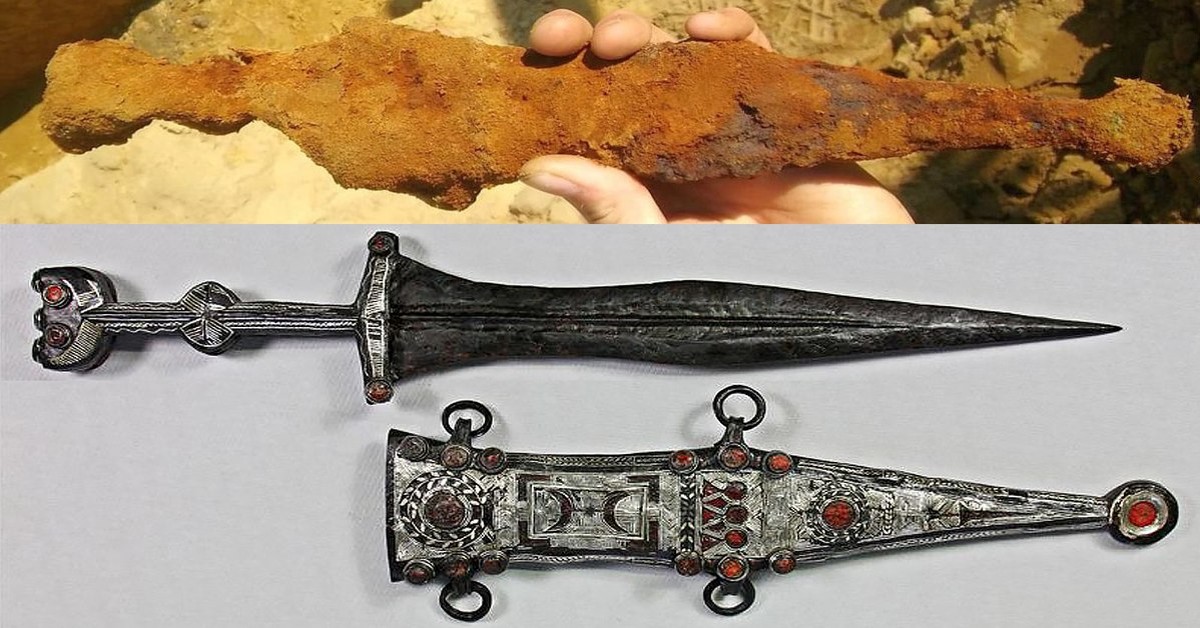When it was found, some people thought it looked like a “chicken tender”. They probably changed their mind soon.

What you see in the picture above is a 2,000 year old Roman dagger, still in its sheath, found by archaeology intern Nico Calman. Then, it looked nothing more than a rusty, lumpy clump, indeed resembling chicken parts fried in breadcrumbs.
But, after nine months of careful restoration, the true beauty of the dagger and its sheath was finally revealed. Wow, what a difference.

The aspiring intern stumbled upon the dagger while exploring a trench at an archaeological site near Munster, Germany. The area was once right on the periphery of the Roman Empire, and soldiers were buried at this particular site because it hosted a military base not far from the city. This important archaeological site in Haltern am See even hosts a Roman History Museum.
Calman is only 19 years old, yet he made a discovery that other locally active archaeologists from the Westphalia Department For the Preservation and Care of Field Monuments, and the University of Trier, have called groundbreaking.

Bettina Tremmel, a senior archaeologist on the dig told Live Science that when they saw Calman’s discovery, the entire team became “emotional…. we were at a loss for words.”
Michael Rind, director of archaeology at the Westphalia-Lippe Council, later confirmed the importance of the find in an interview with the New York Times.
“This combination of a completely preserved blade, sheath and belt, together with the important information about precisely where they were found, is without parallel.”
After discovering the dagger, the team handed it over to professional restoration workers, and after nine months of hard work, they brought the weapon back to its original glory. This is what it would have looked liked with all the pieces together.

According to experts, the dagger wasn’t an actual battle weapon – more like a second resort for when long swords were dropped, broken or taken by the enemy. Its short blade (13 inches) was truly designed for close combat. The silver and semi-precious gem stones on the dagger suggest that it was carried by a soldier of high rank and status.

“It was not the normal practise for Roman soldiers to be buried with their military equipment,” Tremmel explained. “Therefore, this particular soldier, and this particular weapon, must of been of considerable importance. Imagine: though thousands of soldiers were stationed in Haltern over almost 15 years or more, there are only a few finds of weapons, especially complete and intact ones.”
Yes, an incredible find indeed.
Sources: 1, 2, 3
